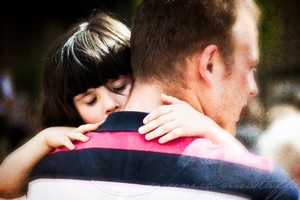- It’s normal for a child to miss his parents while away at camp, to feel a little homesick when first sleeping over at a friend’s house or to shed a few tears at the first day of preschool.
- It is abnormal for children older than 2 to feel intense fear at the thought of temporary separation from parents or caregivers.
Children with separation anxiety disorder feel a powerful fear when away from a loved one and will engage in behaviors to limit the time spent away from the people they love, most typically, their caregivers (parents). These behaviors, such as a refusal to go to school, for example, can result in long term developmental harms.
Separation disorder is a treatable condition that occurs in approximately 4% of children and young adolescents. The most common age of onset ranges from 7 to 9, although it can afflict children younger than 6 as well, in which case it is known as early onset separation anxiety disorder.
The Signs and Symptoms of Separation Anxiety Disorder
According to the American Psychological Association, to meet a diagnosis of separation anxiety disorder, a child or teen must display 3 or more of the following symptoms:
- Feelings of fear and worry when separated or from caregivers
- Nagging worries of some “harm” befalling caregivers
- Worry about getting separated from caregivers (a fear of getting kidnapped, for example)
- An avoidance of school
- Fear of being alone, without caregivers or other “significant” adults
- An inability to go to sleep without caregiver present (unable to sleep away from home)
- Persistent nightmares about separation
- Complaining of physical ailments, when thinking about an anticipated separation
Additionally:
The symptoms must endure beyond 4 weeks, the symptoms must begin before the age of 18 and the symptoms must cause substantial problems at home or at school.
Common behaviors exhibited by those with separation anxiety disorder include:
- Sneaking into the parental bed at night
- An unwillingness to stay in a room alone
- Following the caregiver around (clinging)
- Having serious and unrealistic fears of monsters, ghosts or other scary figures
- Feigning sickness to stay home from school, or exhibiting angry behavior when forced to go
Treatment
Children with separation anxiety disorder respond very well to psychotherapy, particularly cognitive behavioral therapy.
Cognitive behavioral therapy for children with separation anxiety teaches concrete skills that can be used to reduce feelings of fear and worry in anxiety provoking situations. Techniques such as role play, modeling and relaxation exercises are used to practice these life-skills. Parents are taught to reinforce “brave” behaviors through praise and children are taught to praise themselves for overcoming situations of anxiety.
Cognitive behavioral therapy works very well, but works best when initiated soon after diagnosis.
Parents can also help with any activities that build self esteem and confidence.
In some severe cases, doctors will recommend the use of medications. Although not FDA approved for the treatment of childhood separation anxiety disorder, SSRI anti depressant medications have been shown effective in reducing the severity of symptoms.
Page last updated Aug 05, 2010

